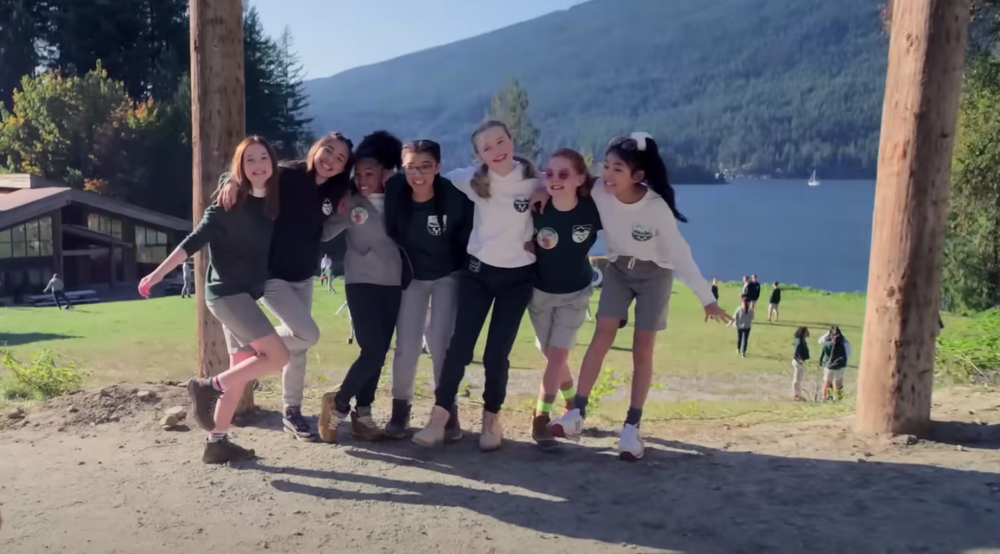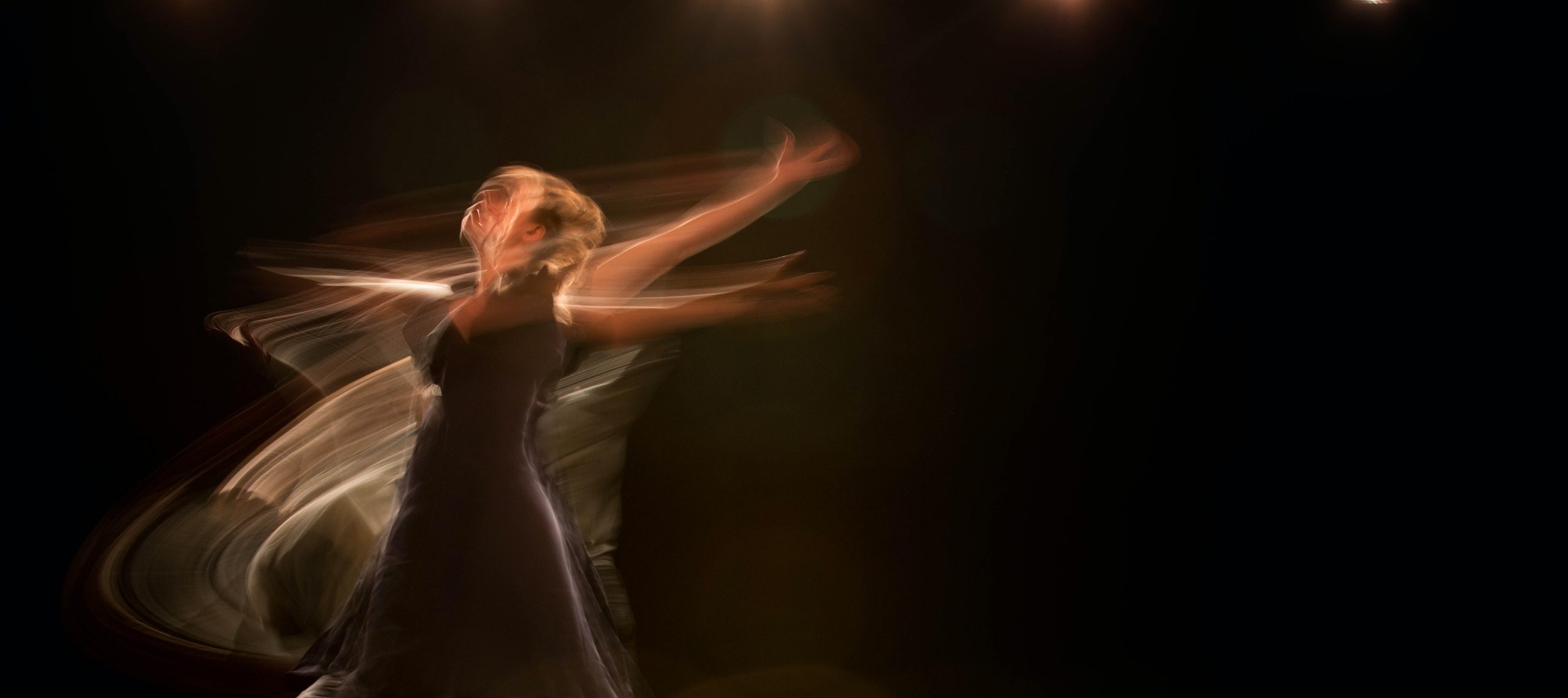interviews
Why ‘Anne of Green Gables’ and ‘Little Women’ Still Inspire Us Today
The authors of “Marilla of Green Gables” and “Meg, Jo, Beth, and Amy” discuss the enduring influence of these classic heroines

The older I get, the more I find myself pulled to the past. Every day that I cross out another calendar box, I feel more nostalgic for the books of my childhood, even the ones that might seem too naive and whimsical for our shrewd modernity. In fact, especially those.
That’s why my latest book, Marilla of Green Gables, revisits one of those classic books that means so much to me, imagining Prince Edward Island before L.M. Montgomery’s heroine arrived. And that literary nostalgia also motivated Anne Boyd Rioux, critically-acclaimed author and editor of six books about 19th century American women writers, to write her latest work Meg, Jo, Beth, Amy: The Story of Little Women and Why It Still Matters.
I sat down with Anne to discuss the iconic novels that inspired us, Anne of Green Gables and Little Women, and why they can still inspire women today, more than 100 years after they were written.

SM: Welcome Anne — with an E, I must point out. I’m thrilled to sit down together to discuss these two books in light of our own recent work (Marilla of Green Gables and Meg, Jo, Beth, Amy: The Story of Little Women and Why It Still Matters).
ABR: Nice to meet you too, Sarah — with an H. It is exciting to be able to talk with you about our favorite books — Anne of Green Gables and Little Women. I think of both of us relate to these books on a personal level but also realize how important they have been in so many women’s lives and therefore how transformational they have been on a larger scale.
I think that there is something powerful (perhaps spiritual) about the connection we and so many readers have to these authors. They live on for us in their books and give us the courage and strength we need at times. Their books are old friends we can always turn to. I noticed in my research on Little Women, though, that girls aren’t reading the novel as much today as they used it. It was ubiquitous, as was Anne of Green of Gables. Do you think that the March sisters and Anne still have something to say to young girls today, when they have so many iconoclastic, adventurous heroines to choose from?

SM: Absolutely. You know, I’ve been fanatically watching “The Great American Read” on PBS. It’s become something of a stress-reducer in the middle of preparing for Marilla of Green Gables’ launch tour. When I start to feel my gut tightening with anxiety, I pop over to PBS online and listen to Meredith Vieira sing the praises of another classic book friend. It’s instant comfort. I highly recommend the virtual serotonin hit.
Point: Little Women and Anne of Green Gables are two of the top-voted books in that contemporary program. This is proof that given the choice of all the adventurous heroines on bookshelves, we are still choosing Alcott and Montgomery.
That’s not to say that there aren’t many incredible heroines of modern times. We need to stop thinking of it as a this or that, one or the other, winner or loser. Like all things, we ought to embrace each powerful female (characters and authors) as sisters of the force — one that benefits all with exponential development. Old to new, it’s imperative for us as female writers to be each other’s strongest advocates. If we don’t, who will?
And that’s why I believe these books thrive across generations. They are about young women overcoming adversity and fearlessly sharing the message: “You can, too.” That message may or may not be heard amid the onslaught of daily news sound bites. But between the reader and the page, the message has a chance to seed itself in a woman’s heart. I know its capacity. I experienced it the first time I read both Anne of Green Gables and Little Women. These books influenced who I grew to be as an adult and a feminist.
What was your goal when you started writing your book — when you ended — now?

ABR: I decided to write Meg, Jo, Beth, Amy in 2015 when I was finishing up my last book, Constance Fenimore Woolson: Portrait of a Lady Novelist, which was my first trade book for a general audience. I’m a literature professor, and I’ve become increasingly disenchanted with academic writing and communicating with only a small, select readership. I had been reading some books about books (like Rebecca Mead’s My Life in Middlemarch, which I reviewed for Electric Literature, and Maureen Corrigan’s So We Read On about the Great Gatsby) and thought what a great way to write about literature for a wider audience. I wondered what book I could write about and immediately thought of Little Women. Then I checked to see when exactly it was first published and realized that its 150th birthday was coming up in September 2018. So I had to get to work! I knew that the book had been important to me and that I would enjoy spending some time with it and exploring the various ways it had influenced our culture, but I wasn’t prepared for what I found. The depth of readers’ attachment to the book surprised me — from one woman telling me, “I am Jo,” to another reciting Beth’s death scene from memory — as well as the breadth of its world-wide impact. I didn’t realize that it had been translated into over 50 languages and made into television series all over the world — from Japan to Turkey to India. I came to realize that I wanted to both honor the book and its many fans and also challenge some of the nostalgic pieties about the book, to show that Little Women is more complex than it has been given credit for. My goal became for readers to take the novel seriously and not dismiss it as simply a sweet book for girls.
What about you? Why did you want to write your novel based on Anne of Green Gables? Do you think of it as an homage to the original?
SM: It was absolutely a passion project. My mother introduced me to Anne of Green Gables when I was very young. She read the novel to me. As soon as I learned to read on my own, one of my aunts gave me the three-books-in-one volume series as a gift. I’ve been a Green Gables devotee since my earliest recollections. The scenes from it are as salient in my memory as the scenes of my own childhood. But I never ever imagine writing Marilla of Green Gables until just last year.
I’ve been a Green Gables devotee since my earliest recollections. The scenes from it are as salient in my memory as the scenes of my own childhood.
I had published five other historical novels and was chatting with a handful of publishers to see what my next book might be. At HarperCollins, I met an extraordinary editor who asked me to write three, fresh book ideas — just a couple sentences each. I believe her exact words were, “Tell me what book would make your heart sing to write.” In all my years of writing and publishing, I had never had anyone open up the doors like that for me. She didn’t ask for the first 100 pages or how long I’d been journaling on a topic. She didn’t ask if I had one research document or one snippet of archive fact to present, never mind a chapter-by-chapter synopsis or a full manuscript, as is common protocol in publishing. She just said, show me your visions. I have to tell that part of Marilla’s story because it was unlike anything I’d ever experience. So very… kindred spirited. I’m forever grateful for having found her — a lion-hearted champion of my writing and a lifelong friend.
So one of those “dream big” ideas was Marilla Cuthbert’s story. In particular, I had always been fascinated by the cryptic un-telling of Anne of Green Gables, Chapter 37:
“What a nice-looking fellow he is,” said Marilla absently. “I saw him in church last Sunday and he seemed so tall and manly. He looks a lot like his father did at the same age. John Blythe was a nice boy. We used to be real good friends, he and I. People called him my beau.”
Anne looked up with swift interest.
“Oh, Marilla — and what happened?”
Oh, Marilla, what happened? That question never left me and many other readers. This novel is my answer to that. It’s the story of Green Gables’ foundation and what led us to the start of Anne’s legacy there. There’s so much story ground that has yet to be nurtured and harvest. Even what I’ve written here in Marilla of Green Gables feels like the tip of the iceberg.
This novel is an homage to the original series, absolutely. But I’m not Lucy Maud Montgomery. She outdid herself in providing a bounty of esteemed and inspired literature. This is a novel by me, Sarah McCoy. I wrote from a place of grateful reverence to a fictional landscape that has given me much scope for imagination. I wrote praying each hour that I would honor that world and add to it in a way that would make its creator proud. I hope that readers will understand Marilla for who she is as a woman unto herself… as each of us are unto ourselves and yet, are part of a greater united sisterhood.
Do you feel that the female literary models of our youths shape our adulthood — as much as the real women in our lives?

ABR: I absolutely believe that female literary models help shape us, sometimes more than the women around us. That is certainly what so many have said about Little Women. It became clear to me during my research that for many women, particularly of earlier generations, Jo March in particular represented a path in life that girls weren’t seeing in their actual lives. Her ambitions to become a writer made her unique not only in 1868 but also in 1948 or 1978. Reading about her gave so many girls the idea that they could one day become writers too, and that they could shut the doors to their bedrooms and immerse themselves in fictional worlds — that they could demand rooms of their own and the right to express themselves on the page. Little Women has never gotten the credit it deserves for helping to create much of women’s literature, simply by showing girls that they have something important to say and could grow up to become authors. Ursula K. LeGuin said about Jo’s ambitions, “I don’t know where else I or many other girls like me, in my generation or my mother’s or my daughter’s, were to find this model, this validation.”
SM: I love what you said about girls shutting their bedroom doors and demanding a room of their own. That’s exactly what Little Women and the Anne series did for me. I saw that there were other creative women out there who didn’t kowtow to the social convention that a woman’s primary role was to be hostess to the men in her life. As an introvert, I found that unbearably difficult and also, terrifying! I needed the “door shut to a room of my own” to feel balanced and whole. I needed to quietly commune with authors and literary characters to understand myself, come to my own opinions, and find my own voice.
Reading about Jo March gave so many girls the idea that they could one day become writers too, and that they could shut the doors to their bedrooms and immerse themselves in fictional worlds.
I often wonder if the emphasis our modern society has placed on the projected image (Facebook, Instagram) and clever captions (Twitter) has stolen girls’ ability to escape to creative spaces where they can express themselves like Montgomery and Alcott did — like we did. Perhaps because of the all-too-public nature of reality, these books and their fictional narratives, people, settings, and scenes are actually a last bastion of intimate, solitary discovery. When we’re in a book and reading a chapter, there are no Twitter pings. No place on the page to click a Like button. No commenting to the author for instant reply. It’s the reader and his/her imagination left to interpret, decipher, and decide. For those precious hours of reading, the reader is removed from the public reality and allowed to be part of the inner thoughts, emotions, and truth of the novel’s world.
I still remember the scene in Anne of Green Gables when Marilla tells Anne Shirley that Green Gables is to be her home. It’s Chapter VIII. The scene is mostly all dialogue. Nothing extraordinary happens. No slates broken over a schoolboy’s head. No red current wine drunk by the bottle. No green hair or mouse puddings. It’s Marilla and Anne in the kitchen. They’ve just finished washing the dinner dishes.
“Matthew and I have decided to keep you…”
“I’m crying,” said Anne in a tone of bewilderment. “I can’t think why. I’m glad as glad can be. Oh, glad doesn’t seem the right word at all. I was glad about the White Way and the cherry blossoms — but this! Oh, it’s something more than glad…”
She goes on to express how very lonely, sad, and ostracized she felt all her life but being able to stay with the Cuthberts gave her roots, a place to call home, family and soon, bosom friends. It’s as if her life was beginning from a new seed and all because somebody planted her at Green Gables and added some love.
As a young girl, that scene made something rise up in my chest and nearly burst. I was a military child. We moved across cities, states, and even countries every few years. I had never been able to put into words or speak about the lonely, sad, excluded feeling I carried with me at each new place. It wasn’t something military children discussed and even if it was, I wasn’t at an age (7 years old) to properly psychoanalyze why I felt what I felt. I just knew that I never seem to fit… anywhere. Reading this scene for the first time by myself was an ‘ah ha’ moment. These characters understood what I was feeling — understood me. I wasn’t alone! And through that mutual acceptance, I was empowered. I had faith that like Anne, I could find a sanctuary in my family. And like her too, I would one day find that kindred spirits were not so scarce as I used to think.
It’s not the most glamorous or revolutionary scene. In fact, may readers rush by it as they’re cartwheeling through Anne Shirley’s madcap adventures. That’s what makes it such a gem. It’s quiet, intimate, and spoke entirely to my insecure childhood self. Who am I kidding? It still speaks to me. Is there a scene in Little Women that stood out to you as a girl and still resonates?
'Anne of Green Gables' Returns, Darker and More Defiant
ABR: I have always regretted that I didn’t have Jo to inspire me when I was young. I really could have used her example when I was struggling through the awkward teenage years. I didn’t read Little Women until I was in my early twenties (confession!). I was in graduate school, but that turned out to be a pretty important time for me to read the book as well. I was still trying to figure out how I was going to forge my own path in life — how I might teach and write and have a family. The ambition was there, but so was the worry about how to achieve it. The part of Little Women that really resonated with me came at the end, when Jo is married, has a couple of kids, and is running the Plumfield School with Professor Bhaer. She says, “the life I wanted then seems selfish, lonely, and cold to me now. I haven’t given up the hope that I may write a good book yet, but I can wait, and I’m sure it will be all the better for such experiences and illustrations as these,” and she points to her family. The very idea that her book could be better one day for the life she has with her family blew me away and was heartening. From all that I was hearing and reading, women basically had to give up their ambitions once they had a family. I came to believe with Jo (and Alcott) as well that the fuller my life, the better my work would be, and I absolutely believe that has been the case. It certainly has with this book, because my daughter (whom I gave the middle name Josephine) inspired a good deal of it.
SM: Your daughter is named Josephine? That speaks volumes to how a fictional woman could influence you as much, if not more, than a real one. It sounds like both of us came to these literary icons searching for kinship and a place to “fit in” when reality didn’t show us the selves we knew we were deep down — the selves we knew we could become if given the creative freedom to express ourselves.

About the Authors
Learn about more Sarah McCoy at www.sarahmccoy.com or on Facebook, Twitter, and Instagram @sarahmmccoy.
Learn more about Anne Boyd Rioux at www.anneboydrioux.com or on Facebook, Twitter, and Instagram @anneboydrioux.









